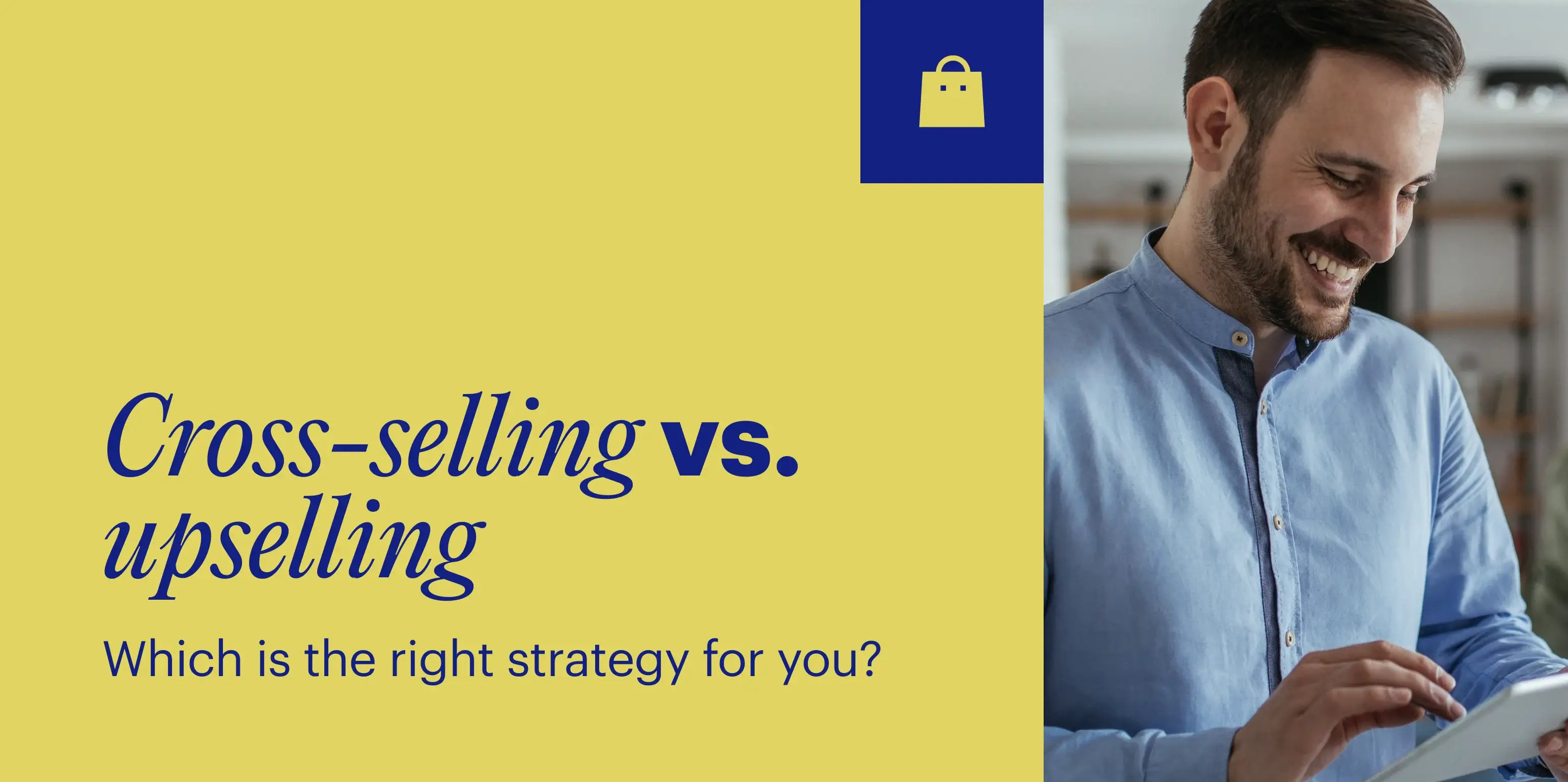Business 101 dictates: you need to win more customers to generate more revenue. What this strategy doesn’t account for is the revenue you can generate from your current customers. This is where cross-selling may come in handy.
What is cross-selling?
Cross-selling is a marketing and sales technique where you sell complementary products to existing customers to increase the value of the purchase.
Cross-selling is beneficial for both brands and customers. As a brand, you generate more revenue and customers get to enjoy a better deal.
Amazon is the perfect example for cross-selling. Whenever you land on a page with a specific product or it to a cart, there are tons of cross-selling promotions and additional suggested items. These items are relevant, so it makes sense for customers to buy them bundled.

Why you need cross-selling
When used correctly, a cross-selling strategy can make a world of difference in your revenue generation and brand-building strategies. Here is what it may bring to the table:
- Boost average order value (AOV): Cross-selling eases the pain of paying for consumers by bundling up products and services together and offering them at a discounted price. It also ensures you increase your AOV (average order value) for every customer.
- Increase customer satisfaction:Cross-selling brings products that customers might need in front of their eyes, saving them the hassle of sifting through your website. Ultimately, you’re paving a quicker path from browsing to buying, making the purchase experience faster and more fulfilling and customers happier.
- Improve retention rate: Research shows that acquiring a new customer is more expensive than retaining an existing one—to be specific, “The success rate of selling to a customer you already have is 60-70%, while the success rate of selling to a new customer is 5-20%.” Cross-selling is a great way to take your existing customers and give them more value improving your retention rates.
- Create brand loyalty:Suggesting the right products or services at the right time of the buying journey helps customers feel that your company understands them on a more personal level. In the long run, it drives average order value (AOV), improves brand loyalty, and keeps clients coming back.
Cross-selling vs. upselling—are they different?
While cross-selling and upselling are both strategies used to increase sales, they differ in their approach.
Upselling involves encouraging customers to upgrade or enhance the product or service they use or subscribe to. For example, if you have a basic stock image subscription for one user, upselling would suggest upgrading to a multi-seat subscription with additional downloads. On the other hand, cross-selling involves recommending purchasing a graphic design tool alongside your stock image subscription.
Focusing on loyal or returning customers often represents an easy win for many companies. However, staying ahead of the curve requires using both upselling and cross-selling techniques. Finding the right balance is crucial whether you choose to cross-sell, upsell, or mix.
Applying too much pressure can repel prospects and existing clients, while too little engagement might result in them overlooking your offers.
How to cross-sell?
1. Offer additional services
Cross-selling is about giving your customers more bang for their buck while making their lives easier. Think about when you’re traveling abroad and need a place to stay. Booking.com is one of the most popular options. Along with accommodation, Booking.com also offers extra services to enhance your travel, like car rentals and airport taxis, making it easy to enjoy your journey from start to finish.
Booking.com confirmation email:
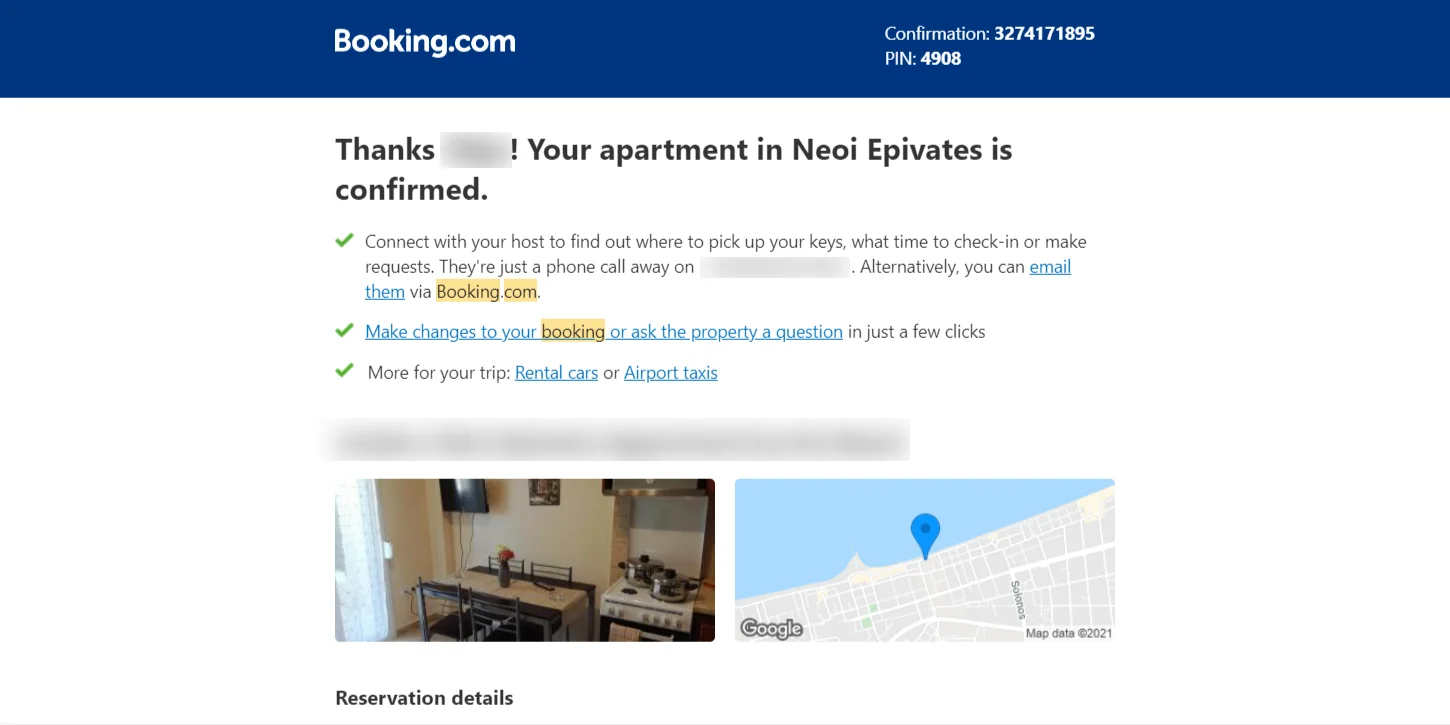
Another great example is free shipping. High shipping costs may discourage buyers from hitting the final “Buy” button at the checkout. You can introduce free shipping on specific days or even leverage the upsell opportunity by offering free shipping on orders higher than a specific amount.
Massimo Dutti uses the upselling strategy to encourage customers to spend over $80 and save on delivery.
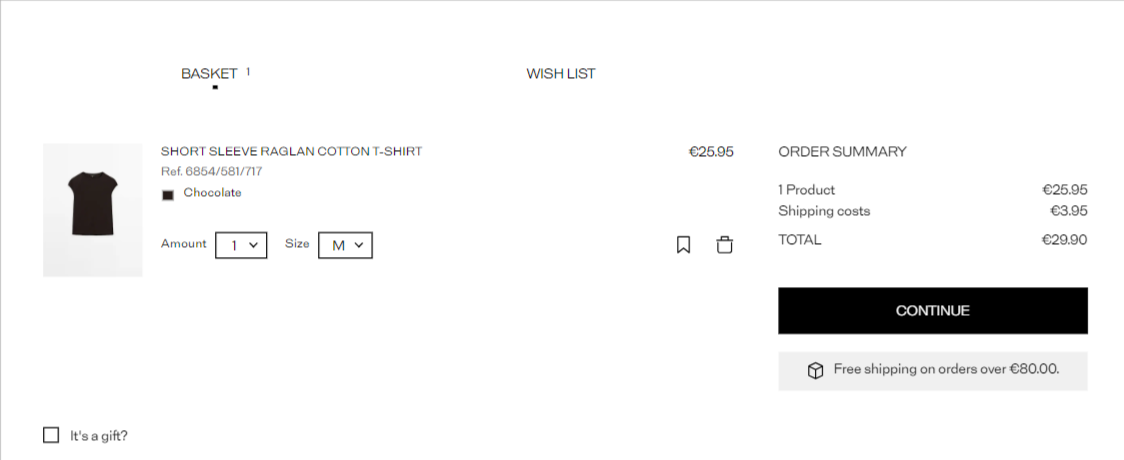
2. Provide complementary items (bundle sales)
Item bundling is a smart way to sell more by combining products that complement each other. This can encourage customers who are unsure about buying items separately to go for a bundle that meets their needs.
Well Woven uses a 20% off bundle cross-selling offer and free shipping to get customers to consider adding a rug pad to their purchase.
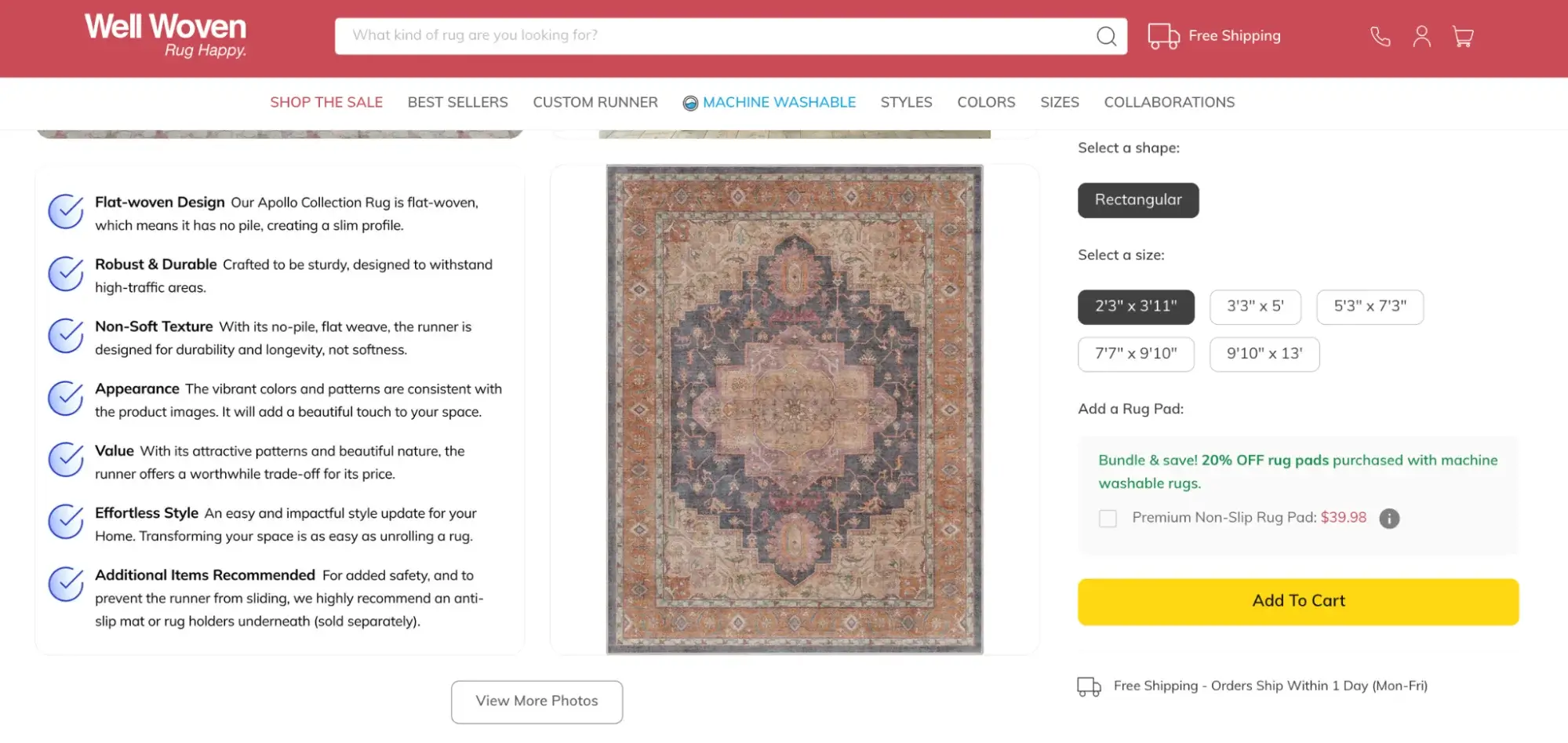
However, bundling must be done carefully. Research from Pepperdine University shows that mixing costly items with very cheap ones in a bundle can make the whole package seem less valuable, making customers less likely to buy it.
Roger Dooley, in his book “Brainfluence,” offers several tips for creating compelling product bundles. He advises:
- Avoiding significant price differences in bundled items
- Focusing on what makes your products unique besides price
- Avoid listing individual items’ prices if they’re part of a bundle
3. Make data-driven suggestions
Cross-selling works best when you really understand what your customers need. By knowing their problems, you can offer additional products that actually help them rather than just trying to sell them something they’re likely not to consider.
It’s also important to keep teaching your customers about all your products that could benefit them. You can use simple online tutorials, webinars, or examples to show how these additional products work.
The best time to suggest these extras is after customers have started to enjoy the first product they bought. Offers tailored to what they like and need are more likely to be successful. Listening to customer feedback about these offers can help you make your cross-selling even better in the future.
4. Pitch promotions
Cross-selling goes hand in hand with different psychological tactics. Some of the most popular are:
- FOMO (Fear of Missing Out): Highlighting that an offer is running out soon, such as a concert ticket pre-sale ending in 24 hours.
- Scarcity effect: Indicating low stock, for example, “Only 5 left at this price!” for a popular gadget.
- Exclusivity: Offering products to a select group, such as a members-only discount on luxury handbags.
REI gives an extra 20% off on one outlet item for a limited time just for members, making it a special deal that only members can get.
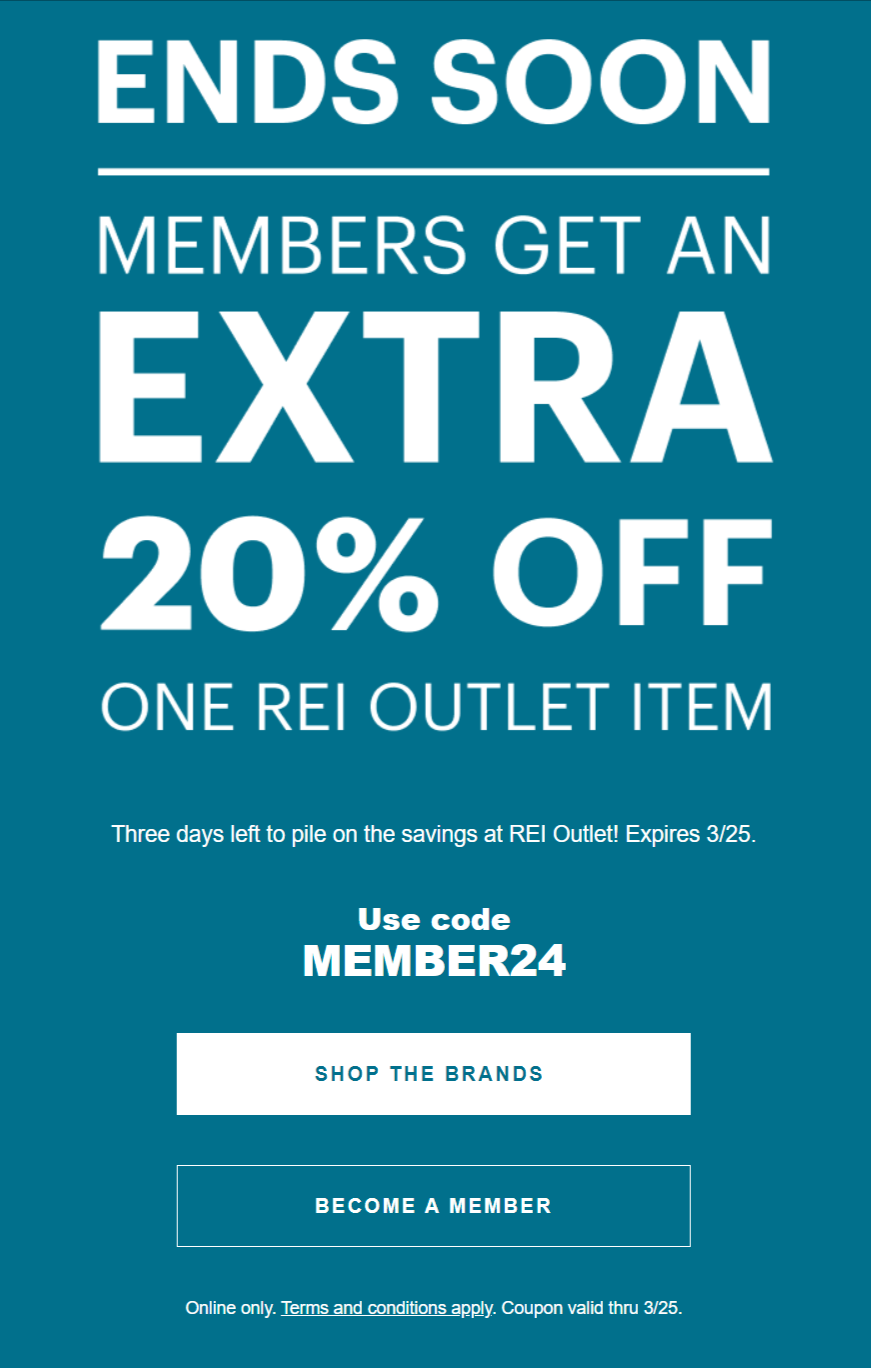
Also, there are some pricing strategies that you can use when pitching your promotions:
- Odd-even pricing: Using odd prices for deals (e.g., $9.95) and even luxury prices (e.g., $100) to signal value and quality, respectively.
- Decoy pricing: Introducing an option that’s not as good to make others look better, like a coffee shop offering small, medium, and large drinks where the medium is priced only slightly less than the large, making large seem like the best value.
- Charm pricing: Ending prices at .99 makes them seem cheaper due to the “left-digit bias,” like a book priced at $19.99 appearing more affordable than $20.
The “2 Can Dine for $9.99” deal from KFC uses charm pricing with its price just under ten dollars, giving the impression of being more affordable.
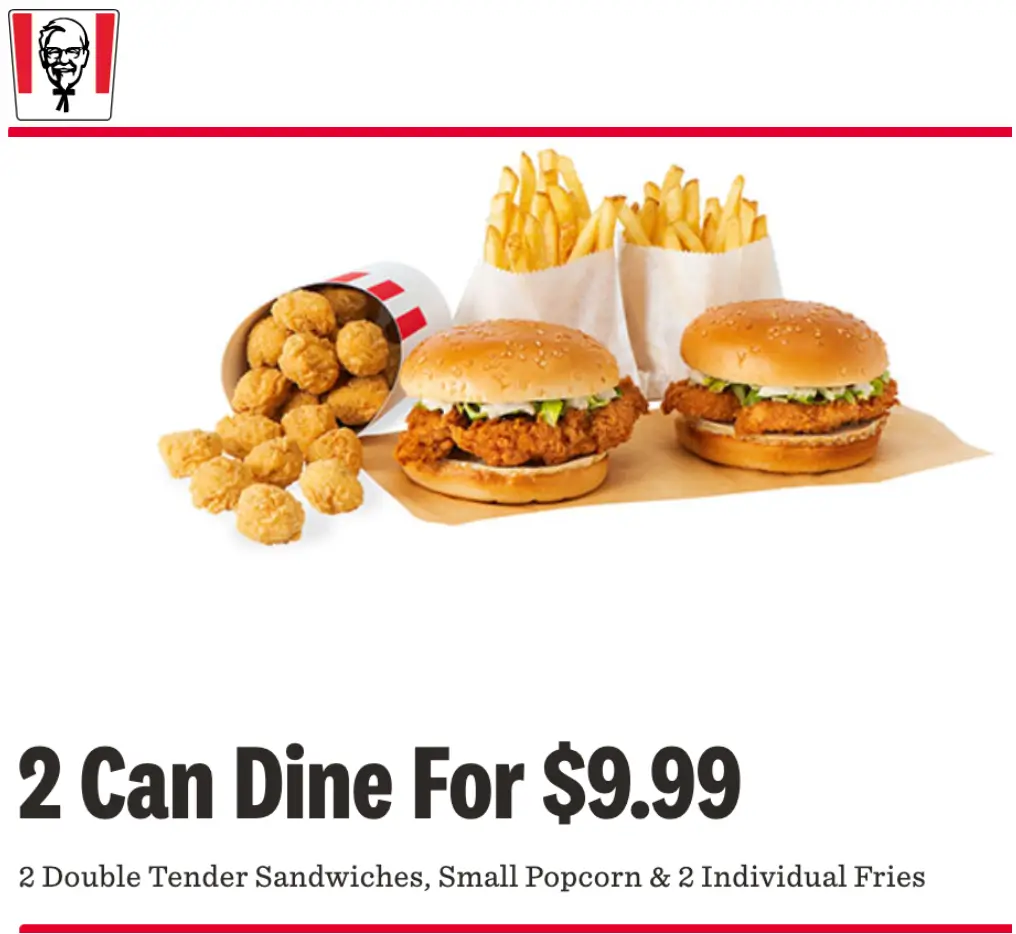
These psychological strategies make promotions harder to resist and introduce customers to products compellingly.
What is cross-selling in marketing?
You might be familiar with the term “retail therapy,” which describes the mood-boosting perks of shopping. Though often mentioned humorously, there’s a real science to back it up. Shopping triggers a dopamine release, much like the one we experience when fulfilling basic survival needs. Scoring a great deal satisfies our deep desire for accomplishment and reward, keeping us eager to keep the hunt going.
Cross-selling cleverly taps into the joy of getting a bargain. Besides the thrill of finding a great deal, this technique simplifies their shopping decisions by non-aggressively offering related products. This is precisely why marketing professionals often use cross-selling and upselling strategies. Let’s review some real-world examples.
Cross-selling vs. upselling examples
Upselling examples
Stanley offers text engraving on your tumbler for an extra $10.
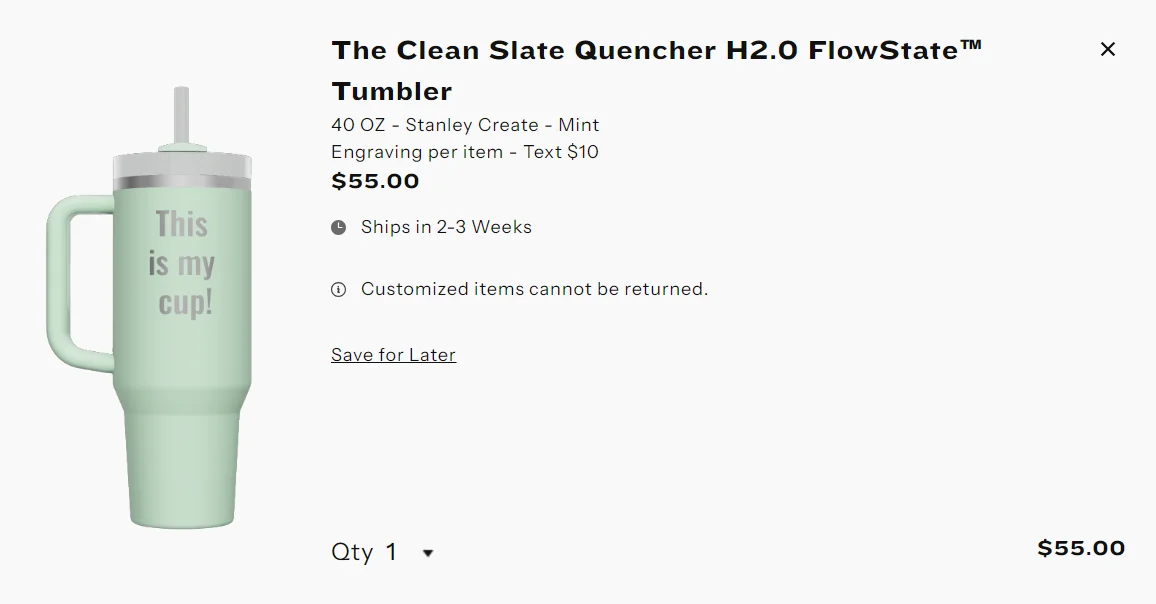
Grammarly
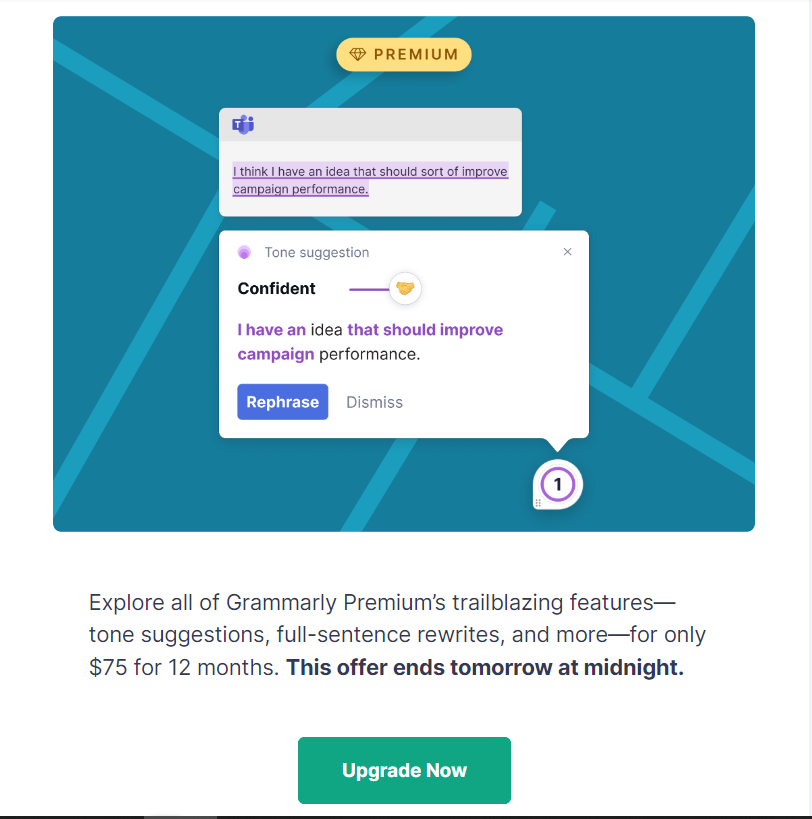
This promotional email from Grammarly promotes the premium version of their service by highlighting advanced features like tone suggestions and full-sentence rewrites. By offering these premium features at a discounted annual rate and emphasizing the urgency with the offer ending “tomorrow at midnight,” Grammarly encourages users to upgrade from a free or lower-tier plan to a higher-tier, more feature-rich one.
Cross-selling email examples
Wendy’s
This email from Wendy’s uses a breakfast deal that pairs popular items at a value price, the “Breakfast 2 for $3 Biggie Bundles”. It encourages customers to combine their favorite breakfast foods, like a sausage biscuit, with coffee or potatoes, increasing the chance of purchasing multiple items in one go.
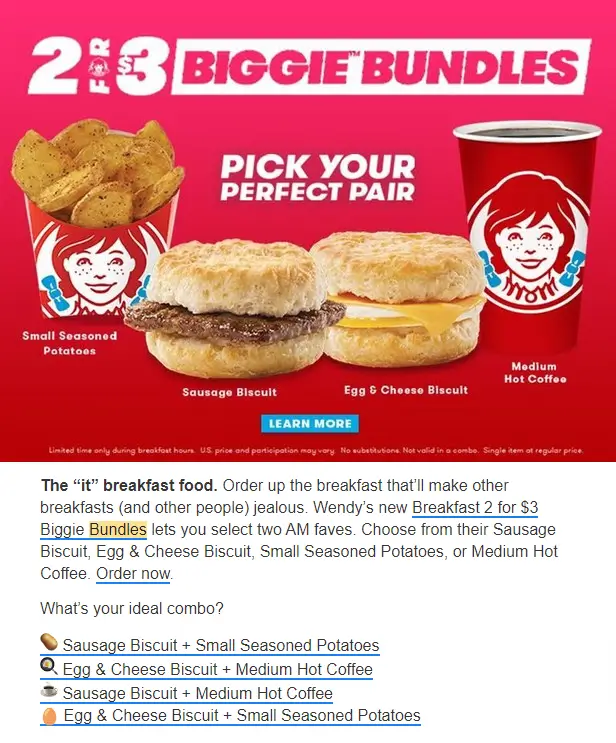
& Other Stories
The promotional email from & Other Stories offers customers a clear value: a 20% discount when they purchase two items. It creates a sense of urgency (“Our sale is ending…”) to encourage immediate purchases. The clean, simple layout with product images entices customers to take advantage of the savings offer before time runs out.
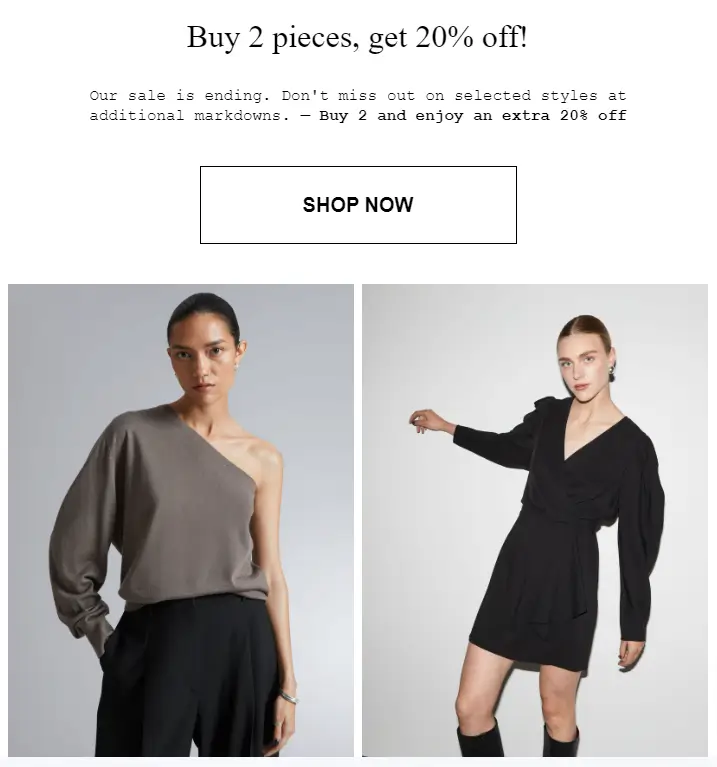
Cross-selling retail examples
Retail stores are no strangers to cross-selling. Consider platforms like Sephora, Walmart, Macy’s, and other commerce giants. As you pick out a product on these websites, you’ll likely see suggestions for add-ons. These might be neatly categorized as “Similar items,” “People also buy,” “You may also like,” and “Frequently bought together.”
Sephora
Sephora shows users a “recommended for you” section when they search for a specific product.
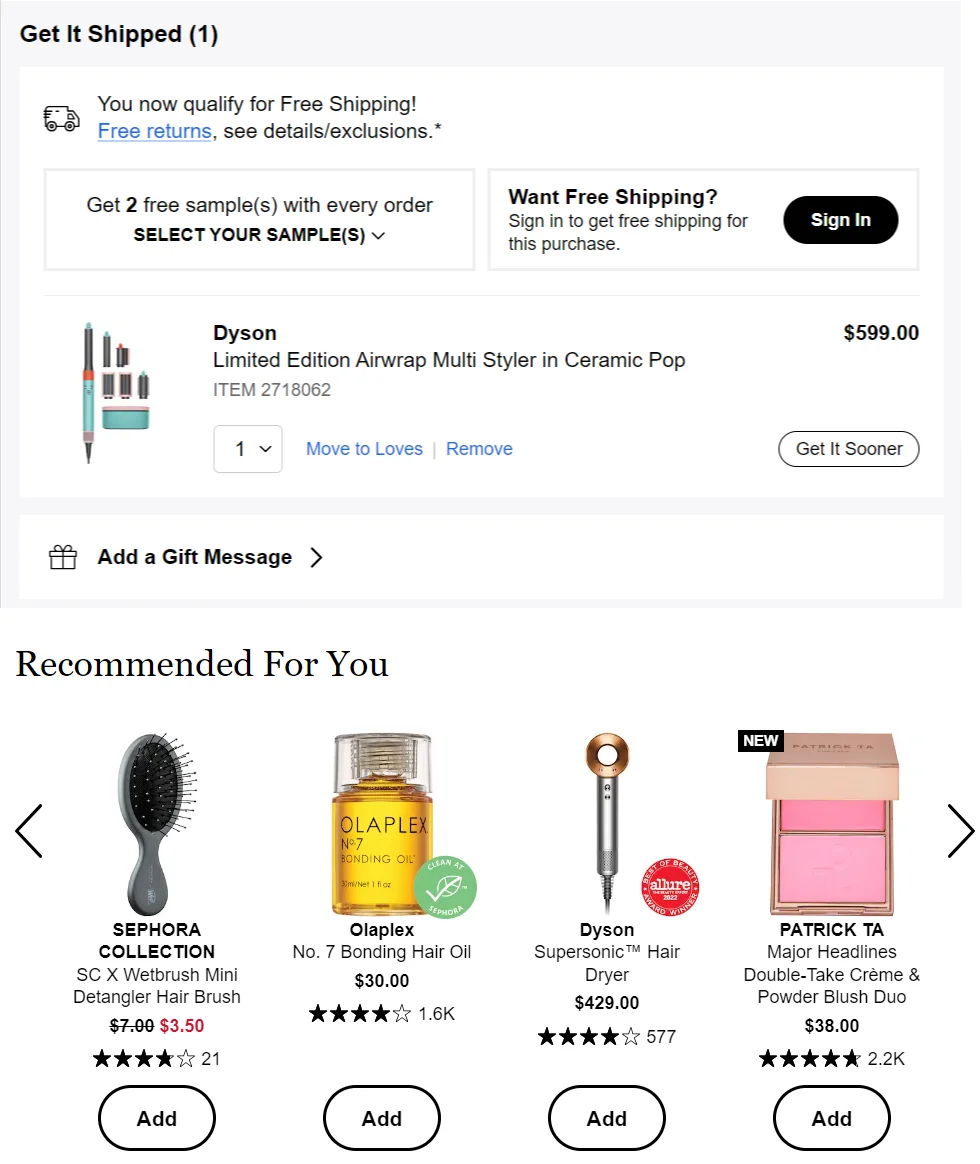
Coach
In this example, the “If you like this, you’ll love these” product page section shows customers other items that are similar in style or category to the one they’re viewing.
It’s a direct cross-selling tactic that uses customer interest in a specific product to introduce them to other products they might not have initially considered.
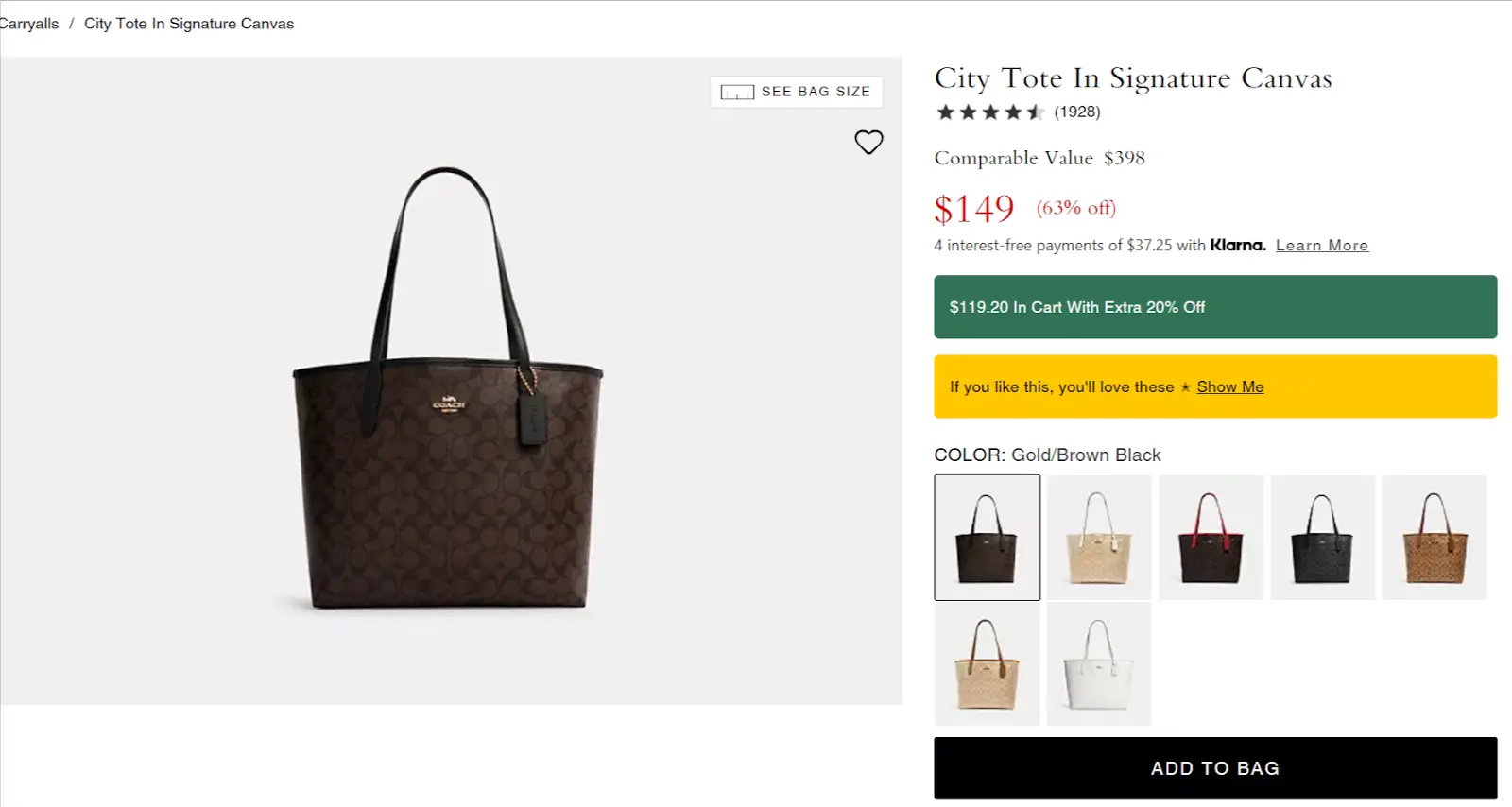
Cross-selling insurance examples
Cross-selling is one of the key sales strategies in the insurance field. When you buy something like car insurance, you’ll often find offers for other types of insurance, such as health or home, coming your way.
This approach offers customers the convenience of managing multiple protection options under one roof, so they don’t need to deal with multiple providers.
It also allows companies to foster stronger relationships with their clients by meeting a wider range of their insurance needs. Let’s look at some examples of how cross-selling works in the insurance industry.
State Farm’s landing page encourages customers to bundle various insurance policies, emphasizing ease of management with a single bill and the potential for cost savings. This approach appeals to those seeking convenience and value in their insurance choices.
State Farm
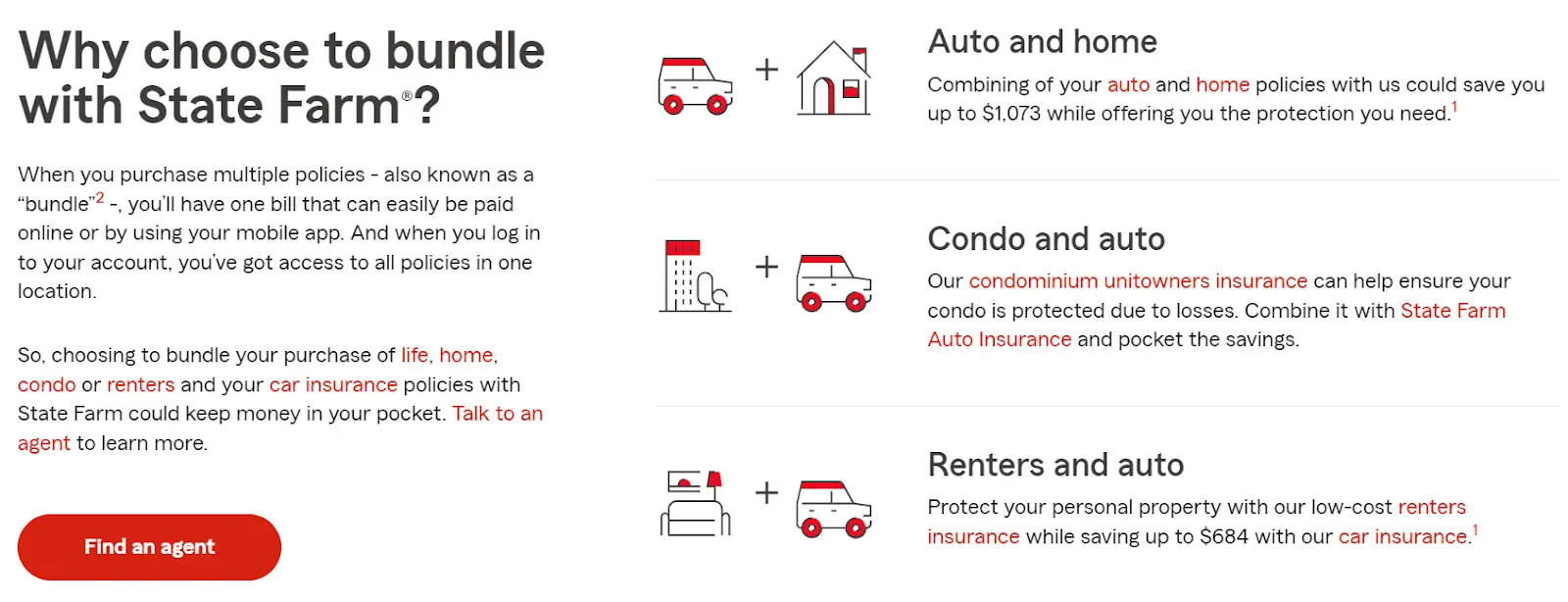
Liberty Mutual Insurance
This landing page suggests that customers bundle their auto and home insurance, which is a smart way to get them to buy more.
The page features a savings of $950, which is a strong hook for people to consider the bundle. Easy-to-recognize icons for different types of insurance make it simple to choose what visitors need.
The big “Get my price” button grabs attention and makes it easy to start the process.
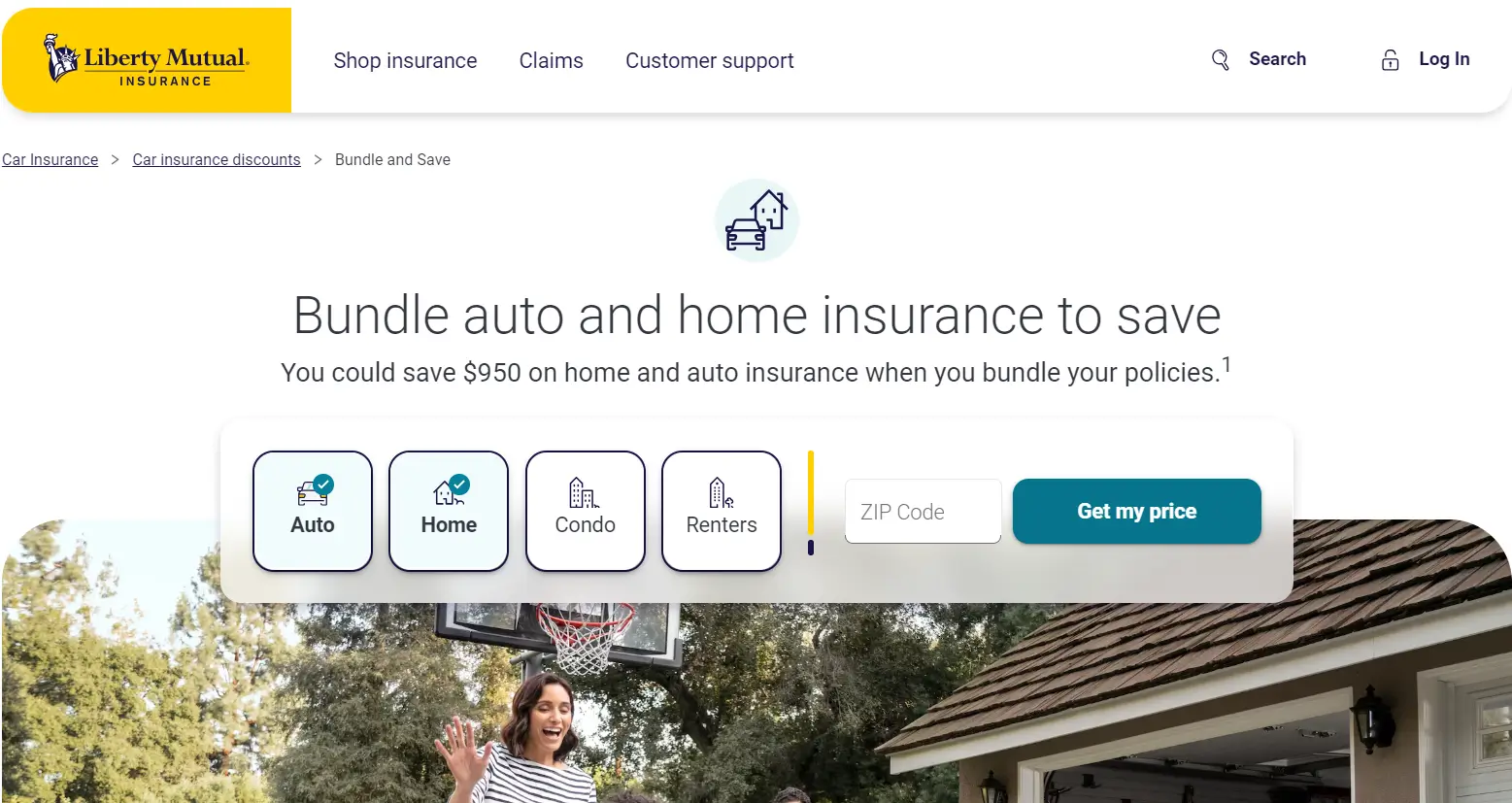
Examples of upselling and cross-selling combined
Sometimes, businesses mix cross-selling and upselling together. They do this to suggest related products and, at the same time, nudge customers towards pricier options. It’s a smart move that can make shopping more enjoyable for customers and increase sales for the business.
Pottery Barn
Pottery Barn cross-sells a pillow because it pairs well with the main item users are buying (duvet & shams). The offer encourages the customer to consider purchasing related items that they may not have initially thought of but which enhance or are necessary for the main product’s use.
At the same time, the buyer can improve the selected product by adding a name or monogram for an additional cost. It essentially boosts the product’s value and uniqueness for the customer—a typical upselling strategy.
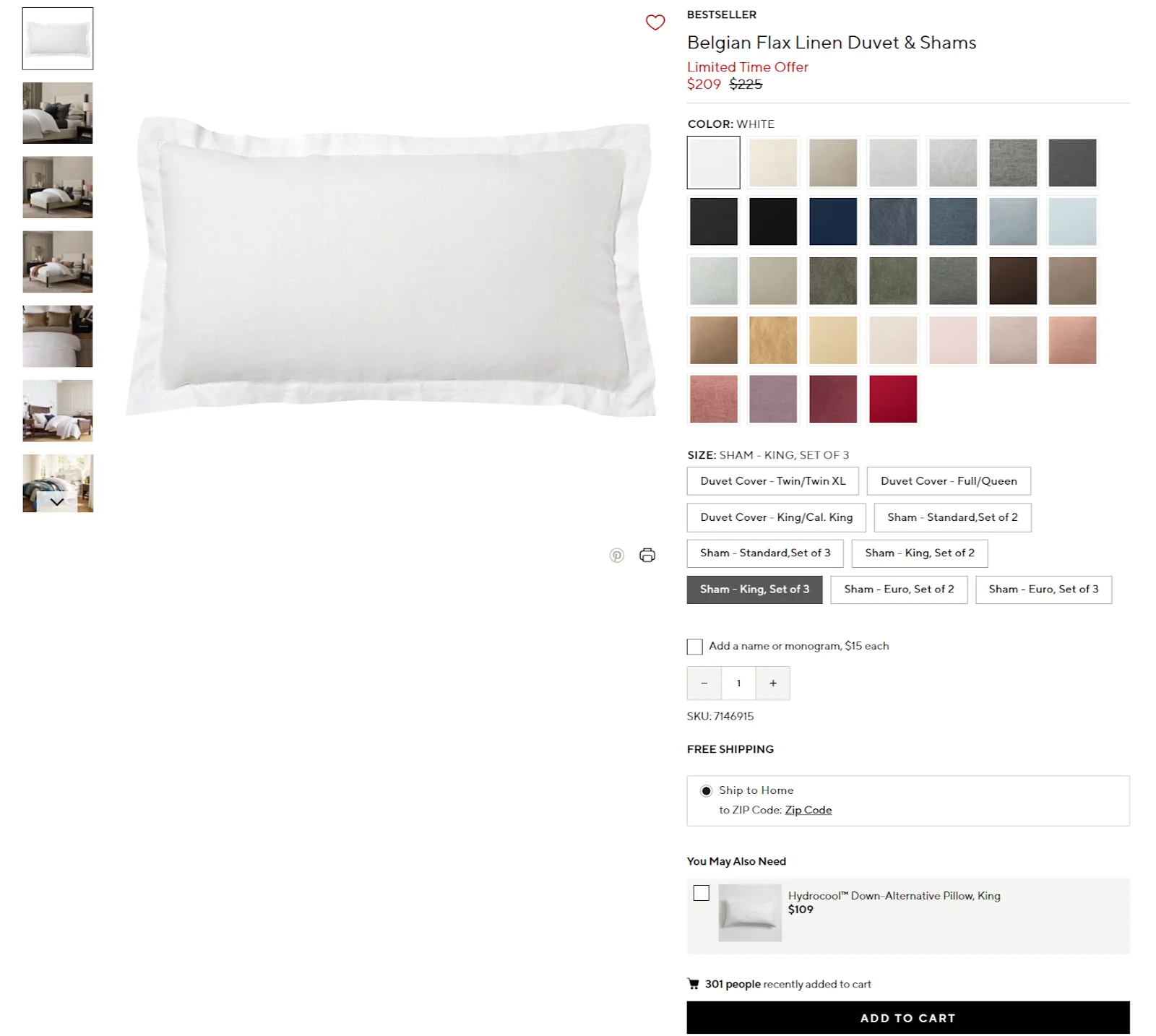
Amazon
The Kindle reader upsells customers extra digital storage and the ability to get rid of lock screen ads. As for cross-selling, that’s where the “Bundles” section comes into play. Here, you’re tempted to buy the Kindle along with some useful accessories, like a fabric cover and a power adapter, suggesting you’ll save some money compared to purchasing each item separately.
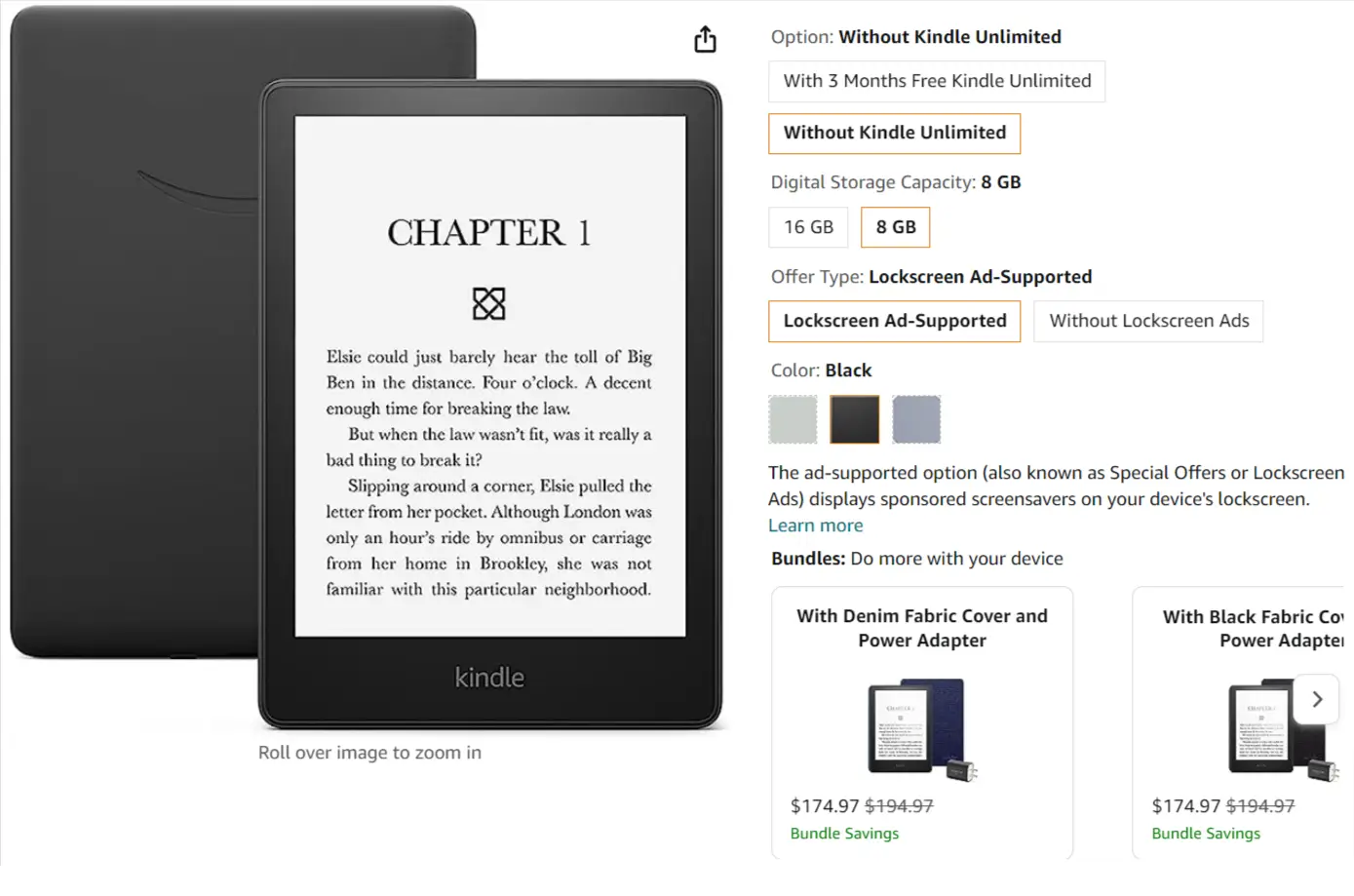
Key takeaways for cross-selling & upselling strategies
Upselling and cross-selling, used separately or together, are vital to boosting sales, improving the customer journey, and building stronger connections. The best part? You don’t have to spend a fortune to make it work. These strategies fit smoothly into your marketing plan, even if you’re on a tight budget, proving you can achieve great things without a big spend.
But you need to remember that timing and relevance are everything. An offer that doesn’t sync up with your customer’s current needs or buying journey will likely be bound to fail.
This is where a streamlined approach using dedicated landing pages comes into play. And Instapage stands out as a go-to platform for the job.
Discover how easy it is to turn ad clicks into conversions, creating dedicated, fast-loading pages for every unique offer.
Sign up for a 14-day free trial and start creating landing pages today.

Try the world's most advanced landing page platform with a risk-free trial.
